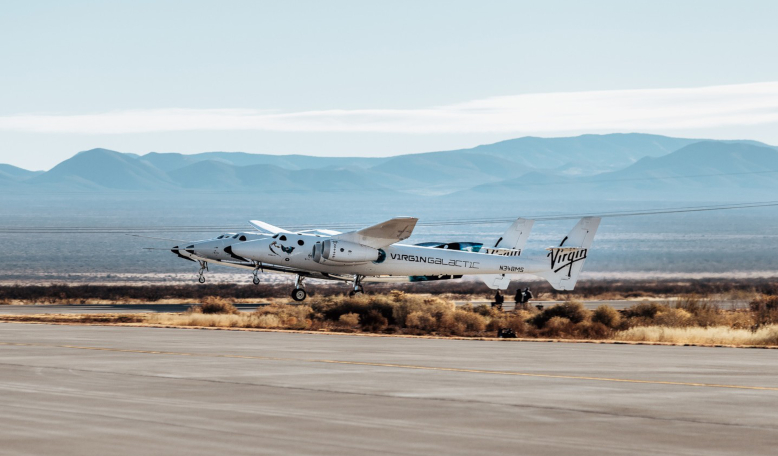A Virgin Galactic test flight Saturday ended prematurely as the spacecraft’s rocket motor failed to fire due to the ignition sequence not completing, say the company in a statement on their website.
Following this event, the pilots conducted a safe landing and return to Spaceport America, New Mexico as planned.
Virgin Galactic is now conducting post flight analysis and can so far report that the onboard computer which monitors the propulsion system lost connection, triggering a fail-safe scenario that intentionally halted ignition of the rocket motor.
This system, like others on the spaceship, is designed such that it defaults to a safe state whenever power or communication with sensors is lost.
The pilots in the spaceship, as well as the engineers and pilots in mission control, are well prepared for any off-nominal results, as they plan and rehearse many potential scenarios during pre-flight simulation practice sessions, including a scenario where the rocket motor does not ignite after release from the mothership.
Michael Colglazier, CEO, Virgin Galactic said: ‘“Our flight landed beautifully, with pilots, planes, and spaceship safe, secure, and in excellent shape — the foundation of every successful mission!
The flight did not reach space as we had been planning. After being released from its mothership, the spaceship’s onboard computer that monitors the rocket motor lost connection. As designed, this triggered a fail-safe scenario that intentionally halted ignition of the rocket motor. Following this occurrence, our pilots flew back to Spaceport America and landed gracefully as usual.
When I became CEO, I was briefed on the safety engineering of our Spaceflight System, which is purposely designed to enable our pilots to safely glide back to the Spaceport at any point during the flight profile. Seeing firsthand how our pilots brought Unity in for a picture perfect landing after an off-nominal condition confirmed this approach. I am even more confident that this is the level of safety that consumers will want and will be expecting from us.
As we do with every test flight, we are evaluating all the data, including the root cause assessment of the computer communication loss. We remain focused on the test flight program we have previously announced, beginning with a repeat of this test flight, which included two pilots and NASA payloads. This will be followed by another test flight which will include mission specialists in the cabin. And following that flight, we will have another test flight which will include our founder, Sir Richard Branson. We look forward to sharing information on our next flight window in the near future.”











